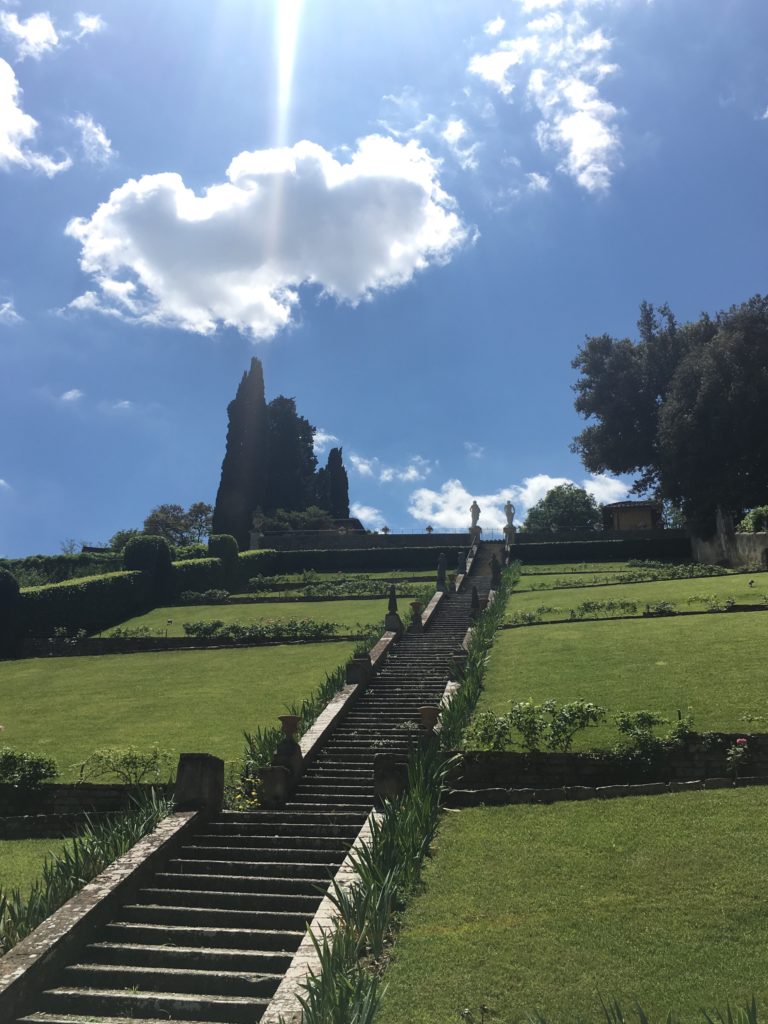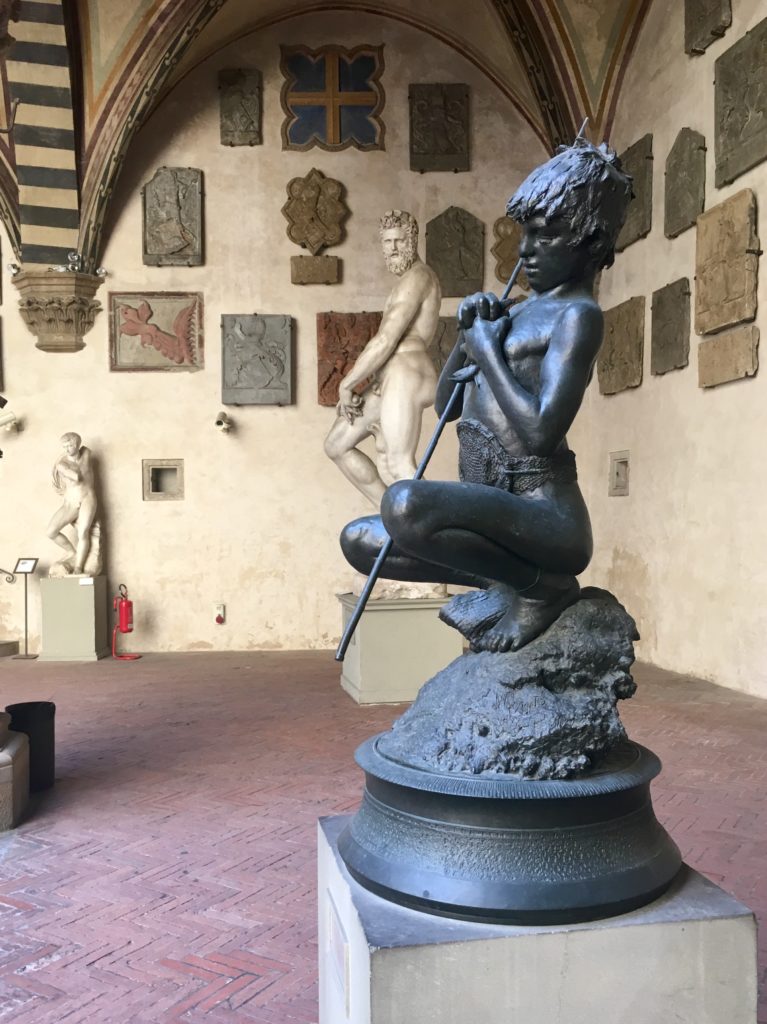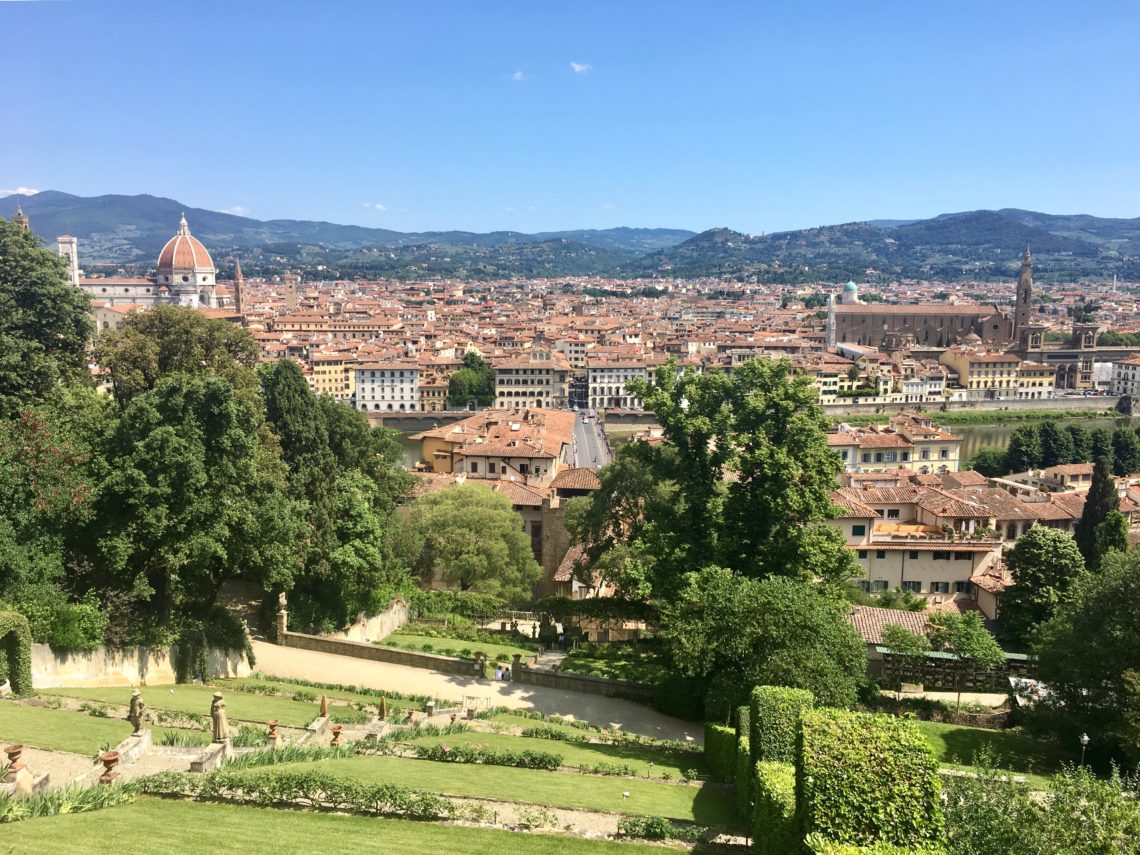After graduating from college two years ago, I decided to take my first international solo trip. I hadn’t been able to stop thinking about Florence since my semester abroad ended the previous winter and I wasn’t scheduled to start working until August. So I took advantage of my in-between-ness, booking a one-way ticket back to the Renaissance city and snatching up a minuscule air bnb in the San Niccoló area. For at least a month, I was going to be in Italy, all by myself.
I was stoked.
I had already visited the main attractions in the city, but I wanted to dive in deeper, explore the nooks and crannies of Florence, and venture out of the university bubble I had been in before. I had a whole month with nothing to do, I was in the gorgeous Oltrarno area, and it was the golden period right before spring boiled over into summer. I spent my days going for long, leisurely walks, popping into obscure churches, speaking shitty Italian, and taking day trips to nearby towns in Tuscany. I walked so much that I could eat mounds of pasta and gelato without putting on weight. It was pure bliss.
By the end of the trip, I had been into almost every museum in Florence. Then when I moved back a year later, I visited all of them again. Whether you’re only in Florence for a short time and are itching to see some museums without queueing up for half the day, or you’re in the city for a long time and want to explore the less touristy attractions, this list of museums is ideal for the art enthusiast, museum junkie, or individual who will go anywhere to seek shelter from the Florentine sun in mid-July. Whichever one it is, I’m not here to judge.
Capella Medici
This silo shaped building behind San Lorenzo is less of a museum and more of a pretty pit stop, but it’s well worth a visit. Upon entering, you’ll find a series of relics and several paintings on the ground floor. Going up into The Chapel of the Princes, however, you may be hit with sensory overload. The chapel is ornately decorated from the intricate tile floor to the awe-inspiring frescoed ceiling in brilliant colors. The formidable graves of six of the Medici Grand Dukes border the walls, serving as a testament to their powerful legacy.
Off to the left of the chapel, you’ll find the New Sacristry, a small room mostly built by Michelangelo between 1520 and 1534. It contains the mortuary monument Night and Day as well as the the graves of Lorenzo de’ Medici and his brother Giuliano. Cool but sad fact: Giuliano was murdered in the Duomo during Easter Sunday mass at the age of 25. His brother Lorenzo managed to escape with only a cut.
You won’t need too much time for this site. I blocked off my whole afternoon for a visit and then walked around the place searching for “the rest” of the museum only to realize there was no rest. Anyway it’s really beautiful and if you finish early you can always grab some good food at the nearby Central Market.

Giardino Bardini
An alternative to the Bobolli Gardens, Giardino Bardini has a gorgeous view of the city of Florence. If you’re at Piazzale Michelangelo, it’s the garden you see to the left of the Ponte Vecchio, sloped on a hill in the middle of the greenery. The main entrance is in the Oltrarno on Via San Niccolò. This is a lovely place to spend a day wandering the gardens, snapping photos, and maybe turning off your phone to think for a while. There’s also a café inside perched on the hill overlooking the city, and a charming villa that hosts different art exhibitions. It’s not completely unknown, though, so it could still be a little crowded based on the season you’re visiting.
Museo Novecento
20th century art? In Florence? Yes, it exists. The Museo Novecento is your best, and essentially only, bet for this genre of painting. Located in Piazza Santa Maria Novella directly across from the church, the museum has two floors displaying assorted artworks, mostly by Italian artists from the 1900s. The first floor features an exhibit that changes seasonally. When there is no construction on the second floor, you can enjoy a breathtaking view of the piazza down below.
Horne Museum
One of the more intimate museums in the city, the Horne Museum is just a stone’s throw from the Arno when heading towards Santa Croce. Herbert Horne (1864-1916) was an English expat and Italophile who fell in love with Florence and made Italy his permanent home. Who does that? Oh right. Me. He was a scholar of Botticelli and frequented artistic and intellectual circles. And collecting many works of art during his lifetime, which he eventually, you guessed it, left to the city of Florence. You start off by watching a film about him, and then proceed to the upper levels. There are also volunteers on hand who are happy to discuss the artwork with you should you have questions. His collection is primarily comprised of 14th and 15th century paintings as well as household artefacts.
Palazzo Davanzati
If you’re aching for a glimpse of Florence during the age of horse drawn carriages and men in red tights, this is museum is must-see. Built in the 1300s, Palazzo Davanzati is one of the only homes preserved in all of its medieval glory. Located between Via de’ Tournabuoni and Via Calimala, it gives you a fantastic image of what living quarters were like for noble, Florentine families and offers a glimpse of the layout of the tower houses that used to be scattered throughout Florence. Walk through assorted rooms hosting a collection of historic furniture, paintings, sculptures, and everyday objects. The first two floors are included with admission but you have to make a reservation to see the upper levels.
Palazzo Medici Ricardi
Located just off of Piazza del Duomo on the way towards San Lorenzo, this large square building doesn’t look like much from the outside. That’s because Cosimo il Vecchio didn’t want the exterior to be too extravagant, preferring not to flaunt his money with a lavish palace in front of the Florentine public. Check out what I can build, peasants! Inside you’ll find a series of rooms with frescoes and the occasional chandelier or piece of historical furniture. The gem of the palace is the famous Chapel of the Magi, frescoed by Benozzo Gozzoli in the fifteenth century. In the back is a charming courtyard with lemon trees. Again, this is a smaller museum with a little less substance, but it doesn’t cost much to enter. Plus, reading about the history of the place makes it a little more exciting.

Museo Bargello
The Bargello is another well-known museum, but it doesn’t get nearly as much traffic as the Academia or Uffizi. Just down Via Preconsolo, the building is often mistaken for Palazzo Vecchio considering it has a similar shape (but it’s much smaller and isn’t adorned on the outside). The building itself is fascinating. It used to be the seat of the government in Florence and no other building was allowed to surpass the height of its tower. Then, naturally, it turned into a prison, was destroyed in a fire, saw countless sieges and uproars, and now sits next to a popular fish restaurant. How time flies. This museum is primarily focused on sculpture, containing masterpieces by Giambologna, Benvenuto Cellini, and four works by Michelangelo. On the top floor, you’ll find an assortment of Renaissance paintings, weapons, ceramics, and figurines.
Museo dello Specolo
I still haven’t been to this one honestly because art always trumps science in my book. However, I’ve heard that this museum in the Oltrarno on Porta Romana contains a wealth of stuffed animals…not the ones you laid out on your bed in second grade. Inside you’ll find the baby hippopotamus that supposedly roamed the Bobboli Gardens back when Leonardo the Magnificent was in power.
Ospedale degli Innocenti
Situated in the Piazza di Santissima Annunziata, this orphanage-turned-museum discusses the history of how it came to be a shelter for unwanted children at a time when wealthy men tended to have affairs with women who, well, weren’t their well-to-do wives. The women used to bring the babies to the side of the building and pass them through a window, as a sort of human drop box, along with a few possessions which would become the children’s only momento of their families. The history is interesting, but in terms of things to see it’s mostly reading plaques on the walls. There is a neat stretch that includes Renaissance paintings (now that I think of it, I’m not sure why). However, it makes for a quirky and slightly dark historical lesson. Pop in if you have a few free hours in the afternoon.
Casa Buonarroti
On a side street behind Santa Croce lies this little museum that pays tribute to the young creative genius. Although he was born in Caprese, Michelangelo did live in this area for a period during his youth (the museum was created by joining several pre-existing properties). A number of Michelangelo’s sketches, small trials of future sculptures, and two of his very first reliefs sculpted in marble, are to be found inside along with details about his life. There’s also a very pretty, very overwhelming room called “The Gallery,” which was frescoed from top to bottom with paintings that tell the story of Michelangelo’s life. It was created by some of the most important artists working in Florence during the 1600s. This is a small museum for sure, but definitely worth seeing if Michelangelo’s life intrigues you.
I hope this guide helps you enjoy Florence to the fullest if you’re lucky enough to be there for a while. Remember that the Uffizi and the David should definitely be seen, but it’s always good to venture off the beaten path.





